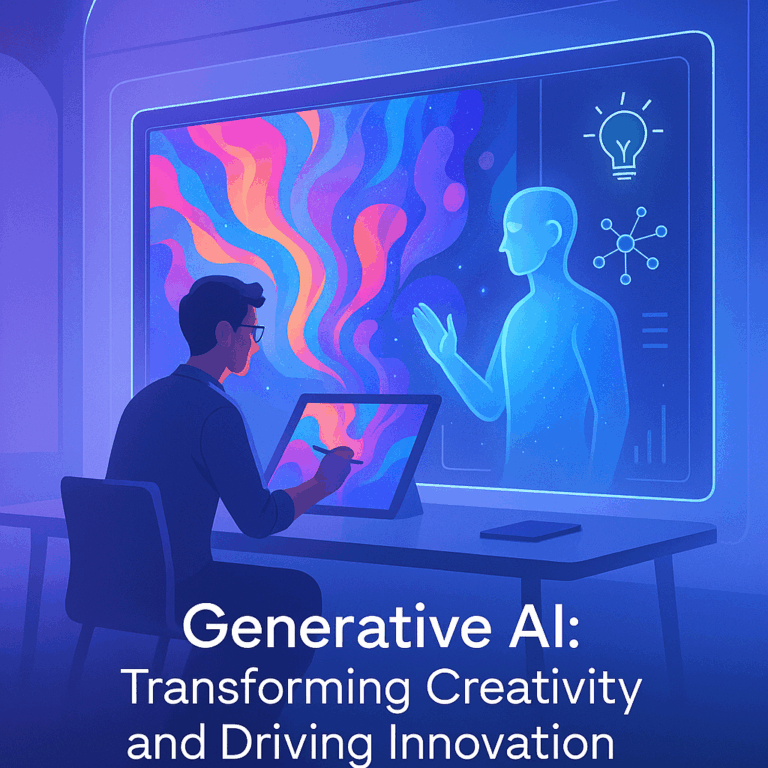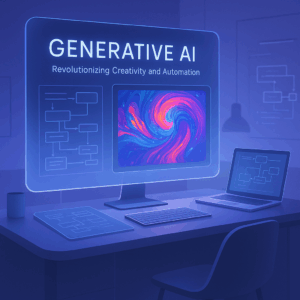The Rise of Generative AI: Revolutionizing Creativity and Industry
Amid the ever-accelerating evolution of tech, generative artificial intelligence (AI) has emerged as a groundbreaking advancement redefining creativity, productivity, and innovation across diverse sectors. This sophisticated branch of AI, characterized by its ability to autonomously produce original content—ranging from artwork and music to complex scientific data and code—has transcended theoretical applications to shape real-world industries and societal norms.
At its core, generative AI leverages advanced deep learning models such as Generative Adversarial Networks (GANs) and transformers, capable of understanding patterns within massive datasets to fabricate novel yet coherent outputs. The introduction of models like OpenAI’s GPT series and DALL·E has pushed the boundaries of what machines can creatively generate, fueling a paradigm shift in how technology complements human ingenuity.

Transforming Creativity and Industry Applications
Generative AI’s impact is strikingly evident in creative fields traditionally dominated by human talent. Artists and designers utilize AI-driven tools to co-create breathtaking visual art, allowing instant iteration and exploration of aesthetics previously unattainable or time-consuming. Musicians harness AI-based composition tools that analyze vast musical histories to inspire fresh melodies and harmonies tailored to specific emotions or genres. In literature and journalism, AI extends writers’ capabilities by drafting articles, generating story ideas, or even personalizing content to audience preferences.
Beyond artistry, industries leverage generative AI to optimize design and engineering processes. In architecture, generative models simulate building structures optimized for sustainability and efficiency, streamlining planning while reducing environmental impact. The pharmaceutical sector employs AI to design novel drug molecules with enhanced efficacy and minimized side effects, accelerating discovery timelines far beyond traditional computational chemistry methods. Software development benefits tremendously too; AI tools can generate functional code snippets, detect bugs, and even assist with testing, ultimately changing how applications are built and maintained.
A particularly profound application lies in synthetic data generation, addressing the chronic shortage of labeled datasets essential for training robust AI systems. By producing varied and high-quality synthetic data, generative AI enables advancements in autonomous vehicles, healthcare diagnostics, and fraud detection, where real-world data scarcity or privacy concerns would otherwise limit progress.
Ethics and Societal Implications
The rise of generative AI is not without significant ethical considerations. The technology’s capacity to produce hyper-realistic content poses risks around misinformation, deepfakes, and unauthorized use of intellectual property. The creation and spread of fabricated media can manipulate public opinion and erode trust in digital communications, challenging societies to develop sophisticated detection and regulation mechanisms.
Privacy concerns also arise from AI models trained on sensitive or copyrighted data, raising questions about data ownership and consent. Transparency in AI-generated content becomes crucial, as does developing frameworks to attribute credit appropriately between human creators and AI contributions.
Moreover, the democratization of content generation through generative AI could disrupt job markets, particularly for creative professionals and knowledge workers. While some see AI as an augmentation tool empowering creators, others worry about displacement and the devaluation of human skill. The conversation around AI ethics thus extends beyond technology to societal, legal, and economic domains, urging multidisciplinary collaboration to harness benefits while mitigating harms.
Key Players Driving Innovation
Momentum behind generative AI comes from a constellation of visionary organizations and research institutions. OpenAI stands at the forefront, pioneering large-scale transformer models that showcase unprecedented linguistic and creative capabilities. Google DeepMind contributes foundational research on GAN architectures and reinforcement learning, expanding generative AI’s theoretical and applied scope.
Enterprise-level adoption is championed by tech giants such as Microsoft, which integrates AI deeply into software products and cloud platforms, powering tools like GitHub Copilot for coding assistance and AI-driven design enhancements. Startups like Runway and Synthesia pioneer user-friendly AI content creation tools, bridging the gap between cutting-edge research and practical applications accessible to non-experts.
Academic institutions remain vital, pushing boundaries on ethics, interpretability, and novel architectures. For example, MIT and Stanford lead interdisciplinary initiatives combining AI with social sciences to ensure responsible development. This ecosystem of collaboration and competition fuels rapid progress, continuously reshaping the capabilities and reach of generative AI technologies.
Future Trajectory and Technological Significance
Looking ahead, the trajectory of generative AI points toward even deeper integration within everyday tech experiences. Advances in multimodal AI—models capable of understanding and generating across text, images, audio, and video—promise richer, more immersive interactions. Imagine virtual assistants generating personalized tutorials with custom visuals, or real-time translation enriched by culturally adaptive multimedia content.
Another frontier lies in human-AI co-creation platforms where AI acts less as a tool and more as a collaborative partner in problem-solving and artistic expression. These systems, imbued with context awareness and emotional intelligence, will expand the boundaries of creativity and empathy in technology interactions.
Technological refinement will also focus on improving robustness, fairness, and interpretability to build trustworthiness essential for widespread adoption. The ability to audit AI decision processes and mitigate biases will become intrinsic to the development lifecycle as regulatory frameworks mature globally.
In societal terms, generative AI holds the potential to democratize innovation, fostering equitable access to sophisticated creative and analytical tools. This democratization could unleash unprecedented waves of knowledge generation, entrepreneurship, and cultural exchange, powering the next wave of digital transformation.
In essence, generative AI stands as a defining hallmark of contemporary tech, a fusion of algorithmic sophistication and human-centric design. Its multifaceted influence reshapes what technology means to individual creators, enterprises, and society, signaling an exhilarating future where imagination itself intersects dynamically with machine intelligence. As we navigate this transformative era, understanding and steering generative AI’s evolution becomes imperative—for it is more than a technological advancement; it is a creative revolution manifesting across all dimensions of human endeavor.


